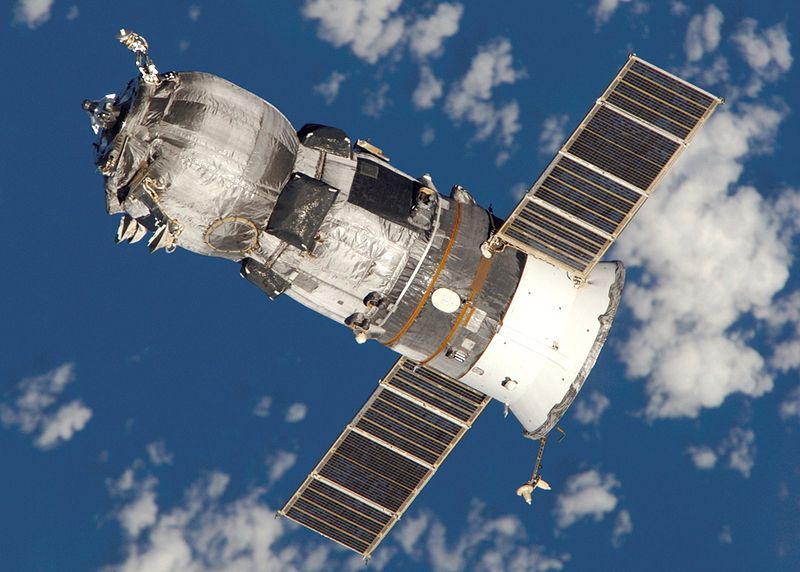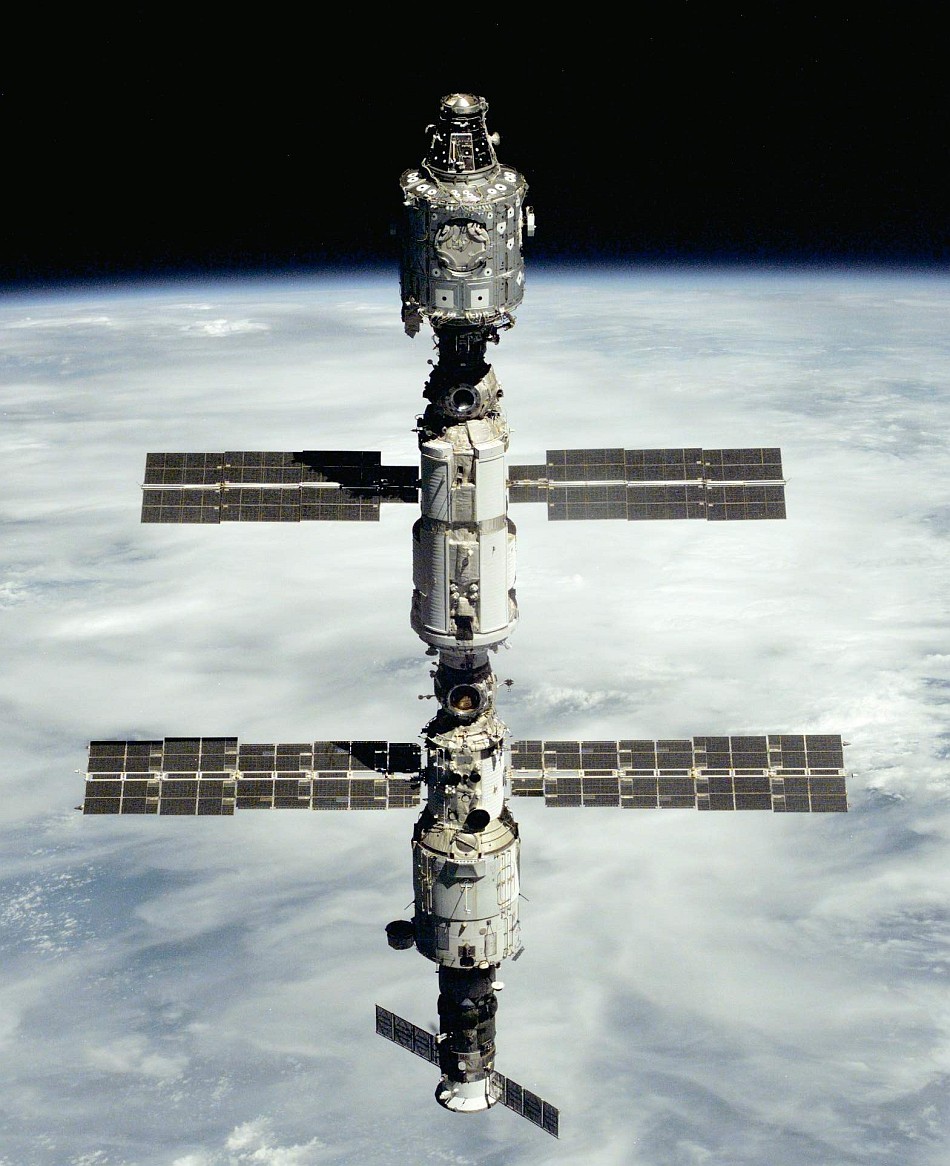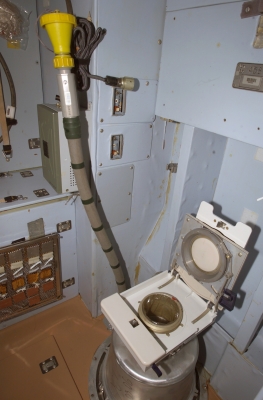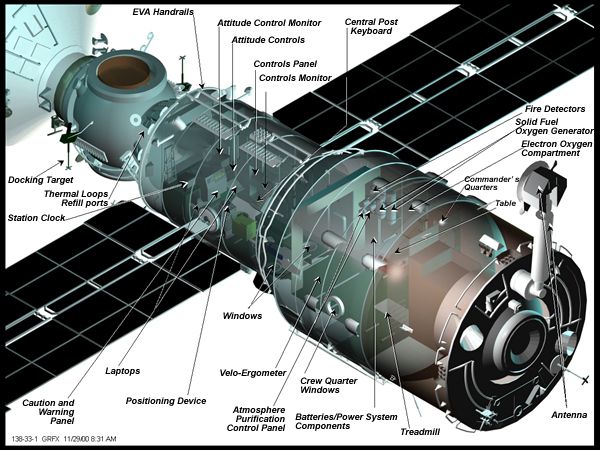Added 1 new A* page:I just finished my space module round-up a couple days ago, and then today a different type of space module goes and makes the news: the Russian Progress M-12M, an unmanned supply ship for the International Space Station, much like the ATVs I was talking about a few days ago, crashed in Siberia--supposed shaking windows for 100 km around--after a failure in the third launch stage of its Soyuz rocket.
Progress craft have been used since 1978 to carry supplies to Russian space stations--and as far as I can tell from the chart in that last link, this was the first one--of well over 100 flights--to have a launch failure (others have conked into a space station or two accidentally), which is rather remarkable; currently three to four launch for the ISS every year. Here's what one looked like in 2005, preparing to burn up in the atmosphere with a full cargo of station waste:

image by NASA (source)
And attached to the ISS (at the bottom of the image) in 2000:

image by NASA (source)
Notice how much tinier the ISS was in 2000! The module the Progress is docked with is Zvezda, a Russian-built module added in 2000--the third module of the station. (Interestingly, the rocket that launched the Zvezda was the first to carry advertising--a Pizza Hut logo, the company reportedly paying $1 million for that particular high-flying advertisement.) Its frame however had actually been completed way back in 1985--it was originally going to be the core module of Mir-2, a proposed successor to the Russian Mir space station.
Zvezda, which means "star" in Russian, has sleeping compartments for two cosmonauts, a NASA treadmill, an exercise bike, an uncomfortable-looking toilet

image by NASA (source)
a refrigerator, the primary Russian guidance and navigation computers, thrusters for maneuvering, batteries, and the "Elektron" system that converts humidity and waste water into hydrogen (expelled into space) and oxygen by electrolysis. Elektron has failed three times so far--not a great record--forcing the crew to use backup oxygen supplies; a US backup system arrived in 2007, but Elektron hasn't had a major failure since then.
Here's a handy diagram of the Zvezda:

image by NASA (source)
~~~~~~~~
Also today I noticed an interesting AP article saying a recent University of Hawaii study has calculated there are about 8.8 million species of life on Earth; we know of 1.9 million, so supposedly we have a long way to go in finding the rest, the problem being that they're tiny and/or in difficult-to-reach environments, like ocean floor vents, or deep underground areas. But other estimates have placed the species total between 3 and 100 million, so who knows.
And here's a short slideshow that went with the article, showing some funky tiny species discovered in recent years, including the world's tiniest snake species, which can curl up comfortably on an American quarter dollar coin.
Oh! And the article also mentioned the Encyclopedia of Life, a Wiki-like project with the goal of having a page for every species. The layout seems cluttered and confusing, and I'd think it'll mostly be duplicating content on Wikipedia anyway, but nonetheless, an interesting endeavor.
|
